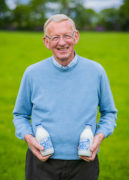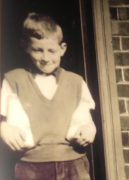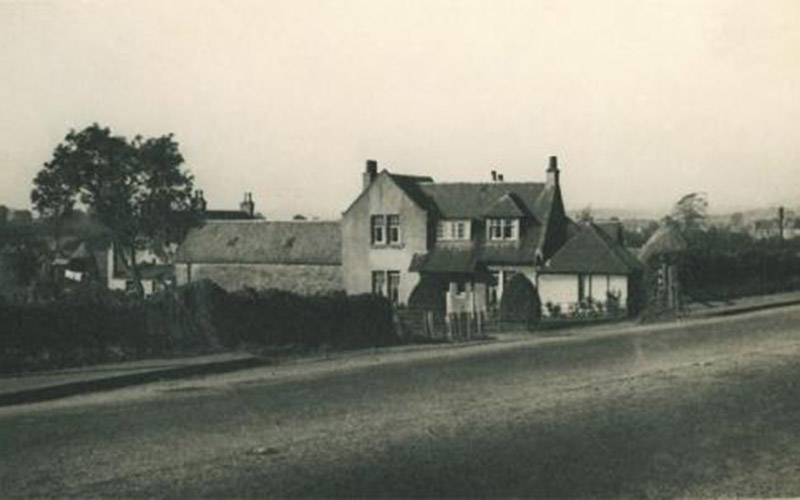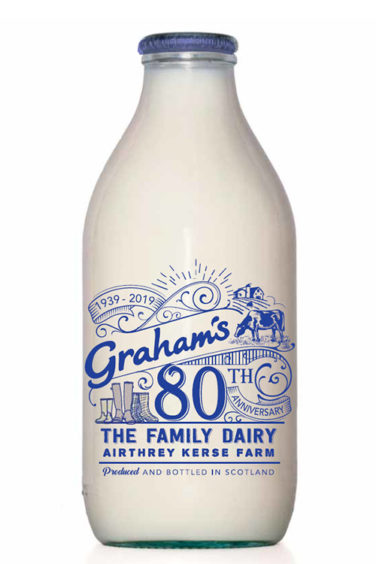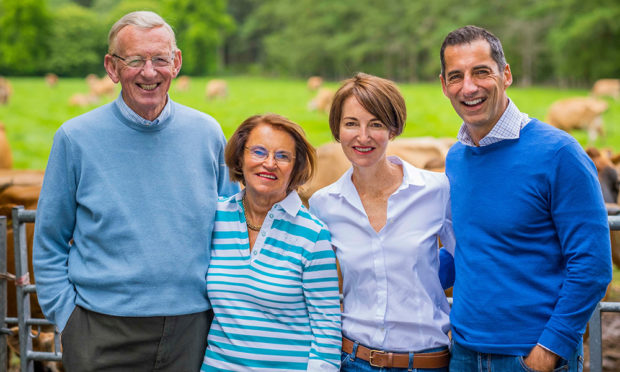
Seven decades have passed since Dr Robert Graham first perched on the back of his father’s pony trap ready to set off on the morning milk round.
Back in those days, before pasteurising was introduced, the raw milk was passed through a cooling machine before being poured into a 10-gallon churn and loaded onto the pony and trap.
As a young boy, Robert would watch as his father went door to door around Bridge of Allan, the ponies so versed in the route they would stop at the correct houses without prompting. Then the housewives would appear with a jug ready to be filled with fresh milk from the churn sourced from a herd of 12 dairy cows.
By the time Robert was 16 and in charge of his own milk round, the herd had grown to 60. Today, as chairman of Graham’s The Family Dairy, he oversees a nation-wide business with annual sales of £109million, and in which his son (also Robert, Managing Director), daughter (Carol, Marketing Director) and wife Jean also work.
And it’s the family history and values that he believes are the secret to the firm’s success, along with its ability to adapt to changing demand – even in those earliest days.
By the late 40s, when milk boys would do their rounds by pony and cart, most customers had migrated to using glass milk bottles. But the big changes came in the 60s, first with a demand for pasteurised milk – and then with changing lifestyles.
Dr Graham said: “We’ve evolved through the different revolutions of deliveries and customer demands. Dairy farming is a hard working life. To begin with we’d be out milking from four in the morning before loading the milk onto the cart, and then it changed to electric vans. They would have huge batteries in them that we would have to charge as soon as we got back for the next day. Towards the end of our run the van would struggle to get up the hill and you’d be wondering if it was going to make it.
“Investing in a pasteurising plant was the best thing we ever did but it was a huge decision and a risk as well. When the university was opened in Stirling it brought a lot of change. People were moving from other parts of the UK and they wanted pasteurised milk. We had to change, but we had to sell a piece of land to do it.
“Then in the early 70s people’s lifestyles changed, more wives went out to work and they didn’t want milk lying on the doorstep so they wanted it delivered before they left and the rounds were getting more and more difficult and we were getting up even earlier. That was the demise of the milk bottle on the doorstep.”
The family’s decision to invest in a pasteurisation plant soon meant orders came flooding in from shops – along with enquiries from other farms looking to use the facility.
“The small corner shops are still the backbone of our business. We deliver to at least 6000 every day in addition to the supermarkets,” Dr Graham added.
And far from the local milk round he would take on with his father, Graham’s now supply to customers across the UK drawing supplies from their own herds and from partner farms across Scotland – chosen personally by Dr Graham. Along with investing in pasteurising equipment, he also credits Carol’s suggestion of changing the name of the company, just over a decade ago, to Graham’s the Family Dairy with helping to build the brand.
He explained: “At that time we were Graham’s Dairies Ltd and Carol didn’t think the name was right – she felt it sounded too big and was taking away from the family aspect. There was quite a discussion at the time but she wanted to change the name to Graham’s the Family Dairy. When we did sales rocketed; people responded to the name and our family values. We are now proudly Scotland’s No.1 Dairy brand.”
One of the most recent turns in the evolution of dairy farming has been the migration away from plastics and back to the old-fashioned milk bottles – something Graham’s reintroduced into their product range last summer initially as a limited edition to mark their 80th anniversary but are now a permanent fixture due to demand.
He explained: “We’ve gone full circle and brought glass bottles back in response to customer demand. There’s both that nostalgic factor but also we’re reducing plastics so we see it as a very positive step.”
After so many years of hard graft, with countless broken nights and silly o’clock rises on the farm, many in his position would have hung up their wellington boots by now – but that’s not on the cards for Dr Graham.
I’ve been doing this for a long time and I’ve no plans to slow down. We’re creating new products all the time.
“We have a wide range of products including our organic range and our Gold range, sourced from Jersey cows, which is naturally higher in protein and calcium than regular milk. I have Gold Top every day on my cereal. And we also produce naturally fat-free Quark, Skyr, Protein 22 cottage cheese, Goodness low-calorie ice cream, and recently launched Goodness Kefir – a lactose free milk drink full of live cultures that are good for the gut.
“We move with the times and demand. People want environmentally-friendly options and they’re more interested in where their food is sourced from as well as eating natural and local produce, and that’s what we’re about.”
Versatile dairy ticks nutritional boxes
Nutrient-rich milk and dairy products are especially good sources of calcium, vitamin D (much needed in these winter months) and are high in protein. They also provide potassium, magnesium, vitamins A, B12 and riboflavin, as well as being all-natural. Here we look at just some of the available options.
GOLD TOP MILK
The benefits of Jersey products are little-known, but impressive nonetheless. Milk from Jersey cows is 18% higher in protein and 20% higher in calcium, with higher levels of vitamins A and D from Jersey and Guernsey cattle than in standard milk.
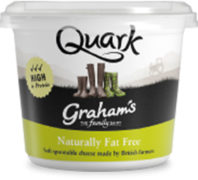 FAT-FREE, VERSATILE QUARK
FAT-FREE, VERSATILE QUARK
For those looking for a protein-packed ingredient, Quark (pictured above) is naturally fat-free and low in salt.
SKYR
Made with pure Scottish milk, live cultures and carefully sourced fruit, this protein-packed yoghurt is packed full of calcium, fat free, high in protein and low in sugar.
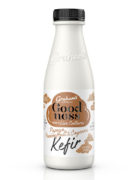 GOODNESS KEFIR
GOODNESS KEFIR
Kefir (pictured above) is loaded with probiotics which can provide all kinds of health benefits for your gut. It’s lactose free, contains billions of live cultures, 13 strains of live bacteria and is high in protein, calcium and vitamins too!
*To find out more about Graham’s The Family Dairy or for great recipes ideas, visit the website by clicking here.

Enjoy the convenience of having The Sunday Post delivered as a digital ePaper straight to your smartphone, tablet or computer.
Subscribe for only £5.49 a month and enjoy all the benefits of the printed paper as a digital replica.
Subscribe